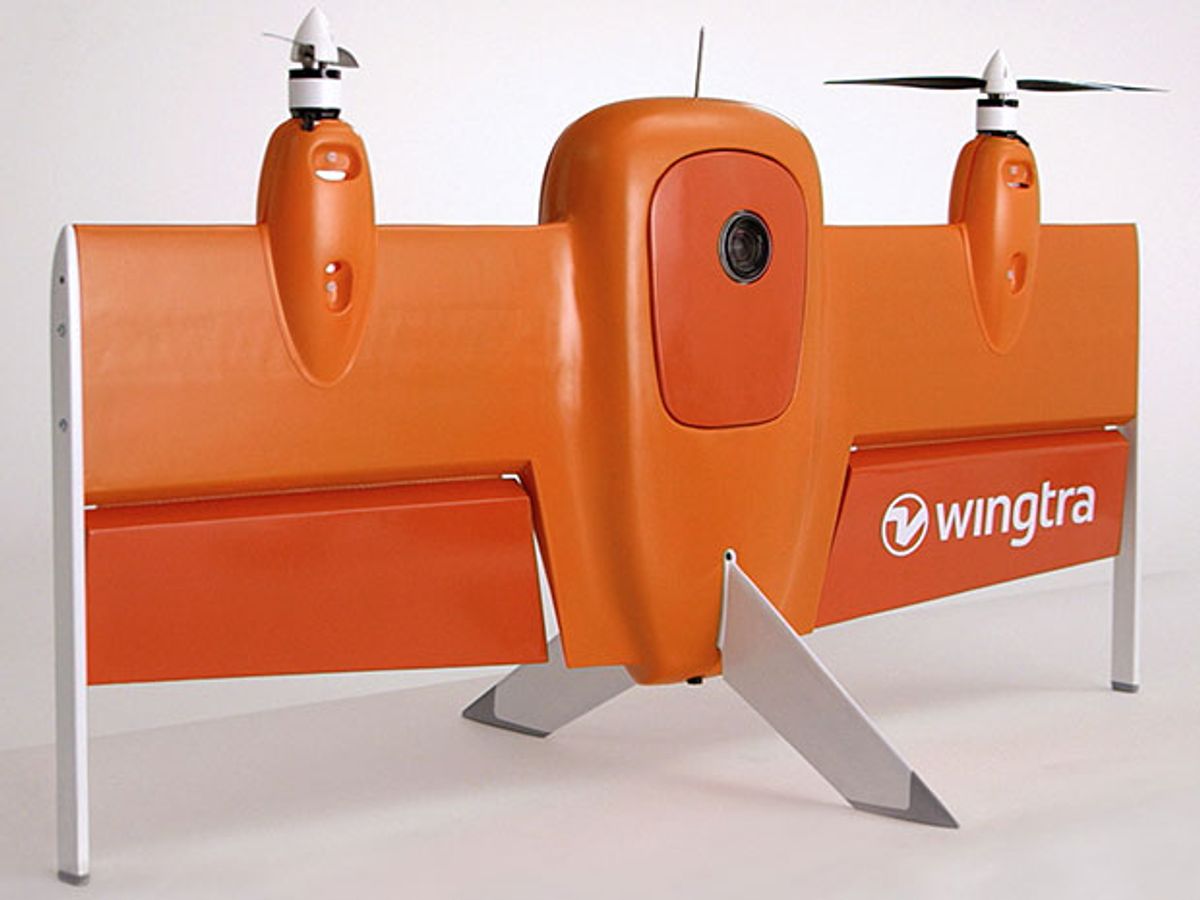Editors Note: This week IEEE Spectrum is covering CeBIT, the monster information and communications technology show that takes place annually in Hanover, Germany. For up-to-the-second updates, you can follow our CeBIT Ninja, Stephen Cass, on Twitter (@stephencass), or catch daily highlights throughout the week here.
Quadcopters and other helicopter-style drones can take off and land vertically with pinpoint precision, but they aren’t as fuel efficient or as fast as fixed-wing drones. On the other hand, fixed-wing aircraft normally require either catapults or relatively long runways to get up to speed before taking off. A spin-off company from the Autonomous Systems Lab at ETH Zurich is trying to provide the best of both worlds with its eponymous Wingtra drone.
The Wingtra takes off vertically (it’s held upright on the ground by fins projecting from the wings and tail), then levels out into horizontal flight. For landing, the general process is reversed, but with the assistance of a camera located in the tail. This camera allows the drone to spot a printed target placed on the ground. Once in sight, the Wingtra will autonomously descend to touch down on the target, within about 10 centimeters of bullseye, says Wingtra’s Leoplold Flechsenberger.
The battery-powered Wingtra can fly for about an hour, during which time it can travel 60 kilometers. There’s no need for continuous control by the operator, as the Wingtra will follow its flight path autonomously. A removable module can carry different payloads: Those looking to inspect railway lines or survey crops for precision agriculture might choose to equip the drone with a high-resolution LIDAR or camera package, for example. Alternatively, an add-on freight module lets the Wingtra carry up to 0.5 kilograms, which Flechsenberger says might prove invaluable in dispatching medical supplies to rural areas.
The drone was designed with simplicity in mind. There are just five primary components: a set of wings combined with the fuselage to form a single body, plus two propellers and two flaps. The drone doesn’t even have a forward-looking camera (although Flechsenberger says one may in added in later versions). The price has yet to be announced, but as the Wingtra is aimed at professional and institutional users, it’s likely to be considerably more than what one would expect for anything aimed at consumers or prosumers. The system is expected to be commercially available in 2017, says Flechsenberger (who adds that Wingtra is hiring to accommodate its rapid expansion).
Stephen Cass is the special projects editor at IEEE Spectrum. He currently helms Spectrum's Hands On column, and is also responsible for interactive projects such as the Top Programming Languages app. He has a bachelor's degree in experimental physics from Trinity College Dublin.



